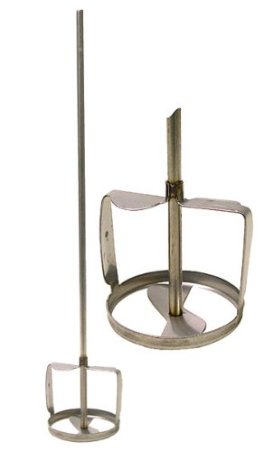I've been brewing for almost 3 years now. I started brewing with some friends who have been brewing for little awhile as well. During our brew days, which usually take place outside in one of our garages/driveways, we usually brew about 6-7 batches totaling 50+ gallons of various beers. We have made some really good beers, won some awards, and until recently, never dumped a batch of beer due to taste.
On Brew Days we like to pick and pull from each others self-perfected processes to try and improve our overall brew day efficiency. One of our biggest improvements has been our chilling process. Our initial chilling process was simply inserting a sanitized immersion chiller into the hot kettle and running tap water till wort is as low as tap water will allow. We then upgraded our process to draining 5 gallons of hot wort from the kettle into a food grade 6-7 gallon sanitized bucket, inserting immersion chiller and running tap water while at the same time vigorously running a sanitized paint stirrer in the wort using a cordless drill. When we started this process during the winter months we were able to chill wort to 70F in around 5 minutes depending on tap water temp. The summer months take about 10 minutes.
Whats the opinion of Hot Side Aeration (HSA)? My last 5 batches (2 different brew days and locations), all brewed in the summer months, using any one of 4 Mash Tuns, of 3 different Kettles, 2 different water sources, 5 different fermenters, and 5 different kegs, all are gonna be pitched due to off soapy flavors. The only consistent piece of equipment that touched all of these beers is the Chiller using our above mentioned process improvement. I read some about HSA, and the opinions are split and experiments are inconclusive.
Are there any thoughts on our process or how to eliminate possible HSA issues? We have not had an issue till recently, and while I said my 5 batches, the other 2 guys are having the same issues with their beers as well, which we think rules out fermenting location, temp, and process. Yeast and ingredient sources are different as well in each beer.
Any comments would be appreciated.
Thanks,
On Brew Days we like to pick and pull from each others self-perfected processes to try and improve our overall brew day efficiency. One of our biggest improvements has been our chilling process. Our initial chilling process was simply inserting a sanitized immersion chiller into the hot kettle and running tap water till wort is as low as tap water will allow. We then upgraded our process to draining 5 gallons of hot wort from the kettle into a food grade 6-7 gallon sanitized bucket, inserting immersion chiller and running tap water while at the same time vigorously running a sanitized paint stirrer in the wort using a cordless drill. When we started this process during the winter months we were able to chill wort to 70F in around 5 minutes depending on tap water temp. The summer months take about 10 minutes.
Whats the opinion of Hot Side Aeration (HSA)? My last 5 batches (2 different brew days and locations), all brewed in the summer months, using any one of 4 Mash Tuns, of 3 different Kettles, 2 different water sources, 5 different fermenters, and 5 different kegs, all are gonna be pitched due to off soapy flavors. The only consistent piece of equipment that touched all of these beers is the Chiller using our above mentioned process improvement. I read some about HSA, and the opinions are split and experiments are inconclusive.
Are there any thoughts on our process or how to eliminate possible HSA issues? We have not had an issue till recently, and while I said my 5 batches, the other 2 guys are having the same issues with their beers as well, which we think rules out fermenting location, temp, and process. Yeast and ingredient sources are different as well in each beer.
Any comments would be appreciated.
Thanks,







































![Craft A Brew - Safale BE-256 Yeast - Fermentis - Belgian Ale Dry Yeast - For Belgian & Strong Ales - Ingredients for Home Brewing - Beer Making Supplies - [3 Pack]](https://m.media-amazon.com/images/I/51bcKEwQmWL._SL500_.jpg)



















